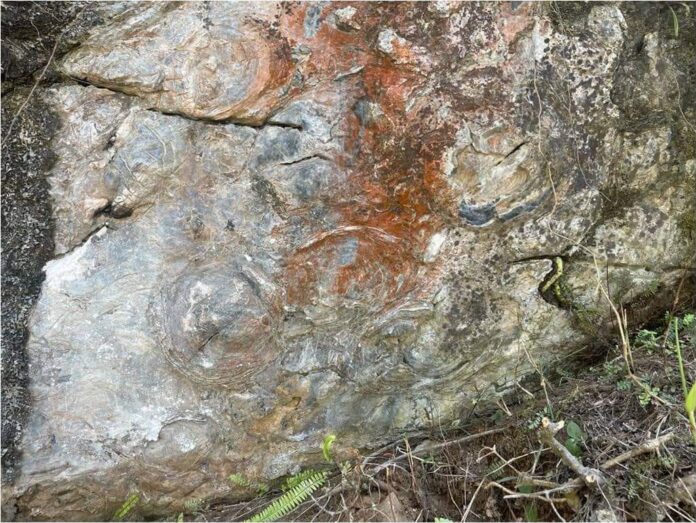In a groundbreaking move for both science and tourism, Sikkim Chief Minister has unveiled plans for the development of a fossil park at a site featuring ancient stromatolites, estimated to be around 1.5 billion years old. This major development aims to highlight Sikkim’s rich geological heritage, boost tourism, and provide a valuable resource for scientific research.
Overview of the Fossil Park Project
The new fossil park, to be developed at the site of ancient stromatolites in Sikkim, represents a major initiative to showcase the state’s geological and paleontological treasures. Key aspects of the project include:
- Site Significance: The site is home to stromatolites, which are among the oldest known fossils on Earth. These ancient structures provide critical insights into early life forms and the conditions of early Earth.
- Project Objectives: The primary objectives of the fossil park are to preserve the unique geological features, promote scientific research, and enhance tourism by providing educational and interactive experiences related to the ancient stromatolites.
- Development Plans: The development will include creating visitor facilities, interpretive centers, and research laboratories. Plans also involve establishing trails and viewing platforms to allow visitors to experience the fossil site while minimizing environmental impact.
- Funding and Support: The project will be funded by both state government resources and potential partnerships with scientific institutions and tourism organizations. Efforts will be made to ensure that the development aligns with conservation goals and provides long-term benefits to the region.
Significance of the 1.5-Billion-Year-Old Stromatolite Site
The stromatolite site in Sikkim holds immense scientific and historical value:
- Ancient Life Forms: Stromatolites are layered structures formed by the activity of microbial mats. They provide evidence of some of the earliest life forms on Earth and offer insights into the conditions of the planet’s primordial past.
- Geological Importance: The age and preservation of the stromatolites make this site a rare and valuable geological resource. Studying these formations helps scientists understand the evolution of life and the Earth’s early environment.
- Educational Value: The site offers a unique opportunity for educational initiatives. By learning about stromatolites, students and researchers can gain a deeper understanding of early life and Earth’s history.
Objectives of the Fossil Park
The fossil park aims to achieve several key objectives:
- Preservation: The park will ensure the preservation of the ancient stromatolites, protecting them from environmental degradation and human impact. Conservation efforts will be a priority to maintain the site’s integrity.
- Promotion of Scientific Research: By providing facilities for research and study, the park will support ongoing scientific investigations into the stromatolites and their significance. Collaboration with research institutions will enhance the park’s role as a scientific resource.
- Tourism Development: The fossil park will be designed to attract tourists, offering educational and interactive experiences. This includes guided tours, interpretive displays, and activities that highlight the significance of the stromatolites.
- Economic Benefits: The development of the park is expected to generate economic benefits for the region through increased tourism. It will create jobs, boost local businesses, and contribute to the overall economic development of Sikkim.
Impact on Tourism and Local Economy
The establishment of the fossil park is anticipated to have several positive impacts:
- Boost to Tourism: The unique nature of the stromatolite site is expected to attract visitors from around the world. The park’s development will enhance Sikkim’s reputation as a destination for geological and paleontological tourism.
- Educational Opportunities: The park will provide valuable educational opportunities for students, researchers, and the general public. Interactive exhibits and educational programs will help raise awareness about Earth’s ancient history.
- Economic Growth: Increased tourism and related activities will contribute to economic growth in Sikkim. Local businesses, including hospitality and retail sectors, are likely to benefit from the influx of visitors.
- Community Engagement: The project will involve local communities in various aspects of development and operations. Engaging with local residents will help ensure that the benefits of the park are widely shared and that community interests are considered.
While the fossil park offers significant opportunities, there are also challenges and considerations:
- Environmental Impact: Careful planning and management are required to minimize the environmental impact of the development. Ensuring that the park’s infrastructure and activities do not harm the surrounding ecosystem is essential.
- Funding and Resources: Securing sufficient funding and resources for the project’s development and ongoing operations will be crucial. Effective collaboration with stakeholders and partners will support the project’s success.
- Visitor Management: Managing visitor traffic and ensuring that the park remains a safe and educational experience will require effective planning and oversight. Implementing measures to regulate access and protect the site will be important.
The announcement of the fossil park development in Sikkim’s 1.5-billion-year-old stromatolite site marks a major milestone in showcasing the region’s geological and paleontological heritage. By preserving these ancient formations and providing educational and tourism opportunities, the project aims to enhance scientific understanding, attract visitors, and contribute to the economic development of Sikkim.




